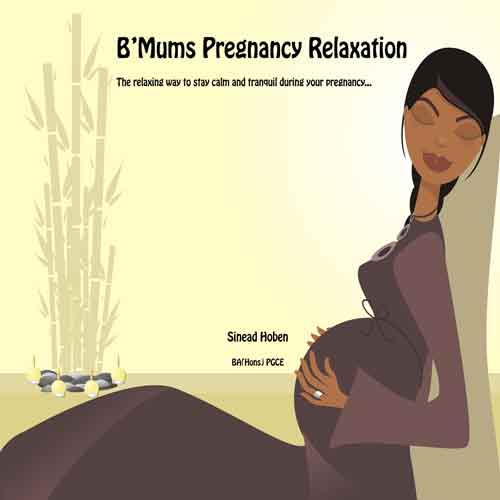When the Baby Refuses to Latch On
Why would a baby refuse to take the breast?
There are many reasons a baby might refuse to latch on. Often there is a combination of reasons. For example, a baby might latch on even with a tight frenulum if no other factors come into play, but if, for example, he is also given bottles early on, this may very well change the situation from “good enough”, to “not working at all”.
If the mother’s nipples are particularly large, or inverted, or flat, these nipple variations make latching on more difficult, not usually impossible.
Some babies are unwilling to nurse, or suck poorly as a result of medication they received during the labour. Narcotics are responsible for many such situations, and meperidine (Demerol) is particularly bad as it stays in the baby’s blood for a long time and affects the way he sucks for several days. Even morphine given in an epidural may cause the baby to be unwilling to nurse or latch on, since medication from an epidural definitely does get into the mother’s blood, and thus into the baby before he is born.
Vigorous suctioning at birth may result in babies not sucking properly and not wanting to latch on. There is no need to suction a healthy, full term baby at birth.
Abnormalities of the baby’s mouth may result in the baby’s not latching on. Cleft palate, but not cleft lip, causes severe difficulties in latching on. Sometimes the cleft palate is not obvious, affecting only the part inside the baby’s mouth.
A tight frenulum (the whitish tissue under the tongue) may result in a baby having difficulty latching on. This is not, strictly speaking, considered an abnormality, and thus, many physicians do not believe that it can interfere with breastfeeding, but they are misinformed.
A baby learns to breastfeed by breastfeeding. Artificial nipples interfere with how the baby takes the breast. Babies are not stupid. If they get slow flow from the breast (as is expected in the first few days of life) and rapid flow from the bottle, they will not be confused—many will figure it out quite quickly.
However, one of the most common causes of babies’ refusing to latch on arises from the misguided belief that babies in the first few days must breastfeed every 3 hours, or on some other insane sort of schedule. This results in anxiety on the part of the staff when a baby has not fed, for example, for three hours after birth, which results, frequently, in babies being forced to the breast when they are not ready yet to feed. When the baby is forced into the breast, and kept there by force, when the baby is not interested or ready, we should not be surprised that some babies develop an aversion to the breast. If this misguided approach then results in panic, and “the baby must be fed”, alternative feeding methods (the worst of which is the bottle) are then used, resulting in worsening of the situation and the beginning of a vicious circle.
There is no evidence that a healthy full term newborn must feed every three hours during the first few days. There is no evidence that they will develop low blood sugars if they don’t feed every three hours (the whole issue of low blood sugars has become a mass hysteria in newborn nurseries which, like all hysterias, results from a grain of truth, perhaps, but actually causes more problems than it prevents, including the problem of many babies getting formula when they don’t need it, and being separated from their mothers when they don’t need to be, and not latching on).
Babies should be together, skin to skin with their mothers, 24 hours a day (See handout 1a The Importance of Skin to Skin Contact ). When they are ready, most will start looking for the breast. Having the baby with the mother skin to skin immediately after birth, and allowing the baby and the mother the time to “find” each other, will prevent most situations of the baby not latching on. Mother and baby skin to skin will also keep the baby as warm as being under a heating lamp. Having the baby and mother together for 5 minutes though, is not the answer. The mother and baby should be together until the baby latches on, without pressure, without time limits (“we’ve got to weigh the baby”, “we’ve got to give the baby vitamin K,” etc—these procedures can wait!). This might take 1-2 hours or more.
But the baby is not latching on!
Okay, so how long can we wait? There is no obvious answer to that. Certainly, if the baby has shown no interest in nursing or feeding by 12 to 24 hours after birth, it may be worthwhile to do something, mostly because hospital policies usually require the mother to be discharged by 24 to 48 hours. What can be done?
The mother should start expressing her milk, and that milk (colostrum), either alone, or mixed with sugar water, should be fed to the baby, preferably by finger feeding. If it is difficult to get colostrum (often hand expression works better than a pump in the first few days), then sugar water alone is fine for the first few days. With finger feeding, most babies will start sucking, and many will wake up enough to attempt going to the breast. As soon as the baby is sucking well, finger feeding should be stopped and the baby tried at the breast. Finger feeding is essentially a procedure to prepare the baby to take the breast, not primarily a method to avoid the bottle, though it will do that too. Therefore it is done before attempting the baby at the breast, to prepare him to take the breast. See Handout 8 Finger Feeding 2005.
Before discharge, early, competent help needs to be arranged so that the mother and baby are getting help by day four or five at the latest. Many babies not able to latch on in the first few days will latch on beautifully once the mother’s milk supply has increased substantially as it usually does around day 3 or 4. Getting help at this time avoids the negative associations with the breast that many babies develop as time goes on.
A nipple shield started before the mother’s milk becomes abundant (day 4 to 5) is bad practice. Starting a nipple shield before the mother’s milk “comes in” is not giving time a chance to work. Furthermore, used improperly (as I see it often being used), a nipple shield may result in severe depletion of the milk supply.
I’m home from hospital. The baby won’t latch on. What do I do?
The single most important factor influencing whether or not the baby latches on is the mother’s developing a good milk supply. If the mother’s supply is abundant, the baby will latch on by 4 to 8 weeks of life no matter what. What we try to do at the clinic is get the baby latching on earlier, so that you won’t have to wait that long. So, it is more important you keep up your supply, than avoid a bottle. The bottle interferes, and it is better you use other methods (such as a cup) if you can, but if you feel you have no choice, you should do what you need to do.
Learn how to get the best position and latch from an experienced lactation specialist (see also Handout A When Latching and see the videos at http://www.drjacknewman.com. As the baby comes onto the breast, compress the breast so that the baby gets a gush of milk. Try the baby on the breast he seems to prefer, or the breast that has more milk, not the breast he resists more.
If the baby latches on, he will start sucking and start drinking (get information on how to know a baby is actually getting milk at the breast—see Handout 4 Is My Baby Getting Enough Milk? And see the videos at http://www.drjacknewman.com.
If the baby doesn’t latch on, don’t try to force him to stay on the breast; it won’t work. He will either get hysterical or “go limp”. Move him away from the breast and start again. It is better to go on-off, on-off several times than to push him into the breast when he hasn’t latched on.
If the baby goes to the breast and sucks once or twice, he hasn’t latched on a little; he hasn’t latched on at all.
If the baby refuses the breast, don’t keep at it until he’s angry. Try finger feeding a few seconds to a minute or two, and try again, perhaps on the other side. Finger feeding is to prepare the baby to take the breast, not primarily to avoid a bottle.
If the baby doesn’t latch on, finish the feeding with whatever method you find easiest.
Using a lactation aid at the breast may be helpful, but often requires an extra hand.
At about two weeks after birth, a change in what you have been doing often seems to send a message to the baby that “there’s more than one way to do this”. If you have been finger feeding only, a change to a cup or bottle will sometimes work, or using a nipple shield will often work. If you have been bottle feeding only, switching to finger feeding may work (only before attempting the baby at the breast is good enough if finger feeding is too slow, and finishing the feeding with cup or bottle).
How to Maintain and Increase Milk Supply
Express your milk as often as is practical, at least 8 times a day, using
a reliable pump that expresses both breasts at the same time. Using compression
while pumping increases the efficiency of pumping and increases the milk supply
(another hand is helpful, but mothers have rigged up the pump so that they
don’t have to hold onto the tubing or flanges while pumping and thus
can compress without help).
If the baby hasn’t latched on by day 4 or 5, start fenugreek and blessed
thistle to increase milk flow. See Handout #24. Cabbage
Leaves, Herbs, Lecithin. Domperidone may also be useful. See Handouts
19a and 19b, Domperidone-1
and Domperidone-2.
If you must use a nipple shield, do not use one at least until the milk supply is well established (at least 2 weeks after the baby is born). Get good hands on help first.
Do not get discouraged. Even if your milk supply is not up to the needs of your baby, many babies will still latch on. Get good help. Do not do this on your own.
Questions? (416) 813-5757 (option 3) or drjacknewman@sympatico.ca
or my book Dr. Jack Newman’s Guide to Breastfeeding (called The
Ultimate Breastfeeding Book Of Answers
in the USA.)
Handout #26. When The Baby Refuses to Latch On. January 2005
Written by Jack Newman, MD, FRCPC. © 2005
This handout may be copied and distributed without further permission, on the condition that it is not used in any context in which the WHO code on the marketing of breastmilk substitutes is violated.




